Barracuda Sleek Swimmer: This sleek, torpedo-shaped fish with sharp, pointy teeth has earned the name "Tiger of the Sea." With its flexible, slim body, the barracuda is particularly adapted to swimming among coral reefs, which requires intricate moves through tight turns. Inflatable Fish: Another trick that allows the barracuda to swim in narrow, twisty places is the ability to inflate and deflate its swim bladder. The shrinking and expanding of this gas-filled chamber allows the fish to either lower its body or to rise to a higher level.Ambush Predator: With few natural enemies, the barracuda hangs motionless in its watery habitat waiting for an unsuspecting victim. As a tasty morsel swims by, the barracuda lunges forward with lightning fast speed to capture its meal. Its knifelike teeth have been known to tear into swimmers, usually when the water is murky and arms and legs can be confused for a fish meal. | 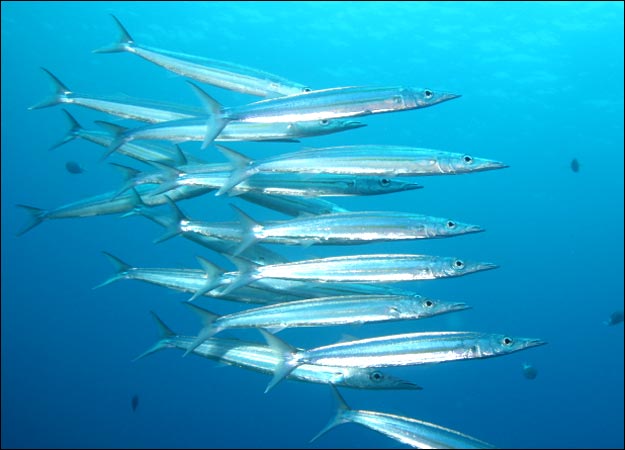 |
Shark Shark Hallmarks: Although the great white shark is probably the most famous of this group of talented hunters and voracious eaters, sharks come in many different sizes, shapes and colors. In general, however, the torpedo-shaped body and sharp rows of teeth are the hallmarks of the shark. Exceptions to the Rule: Some exceptions are the frill shark, a deepwater species, which resembles an eel more than a shark. Another variation is the pygmy shark, which grows no larger than 10 inches in length. The pygmy has light-producing organs on its belly and sides. It is thought that this its luminescence eliminates shadows, making this shark difficult to see when attacking its prey.Hunting Techniques: Different species also depend on different tactics for hunting and killing. Some sharks rely on short high-speed chases. Other species prefer to wait for sedentary fish to come their way, and still others are scavengers on the look out for carcasses.In Decline: The popularity of shark fishing and shark as food have had an impact on populations. About 100 million sharks are caught annually. | 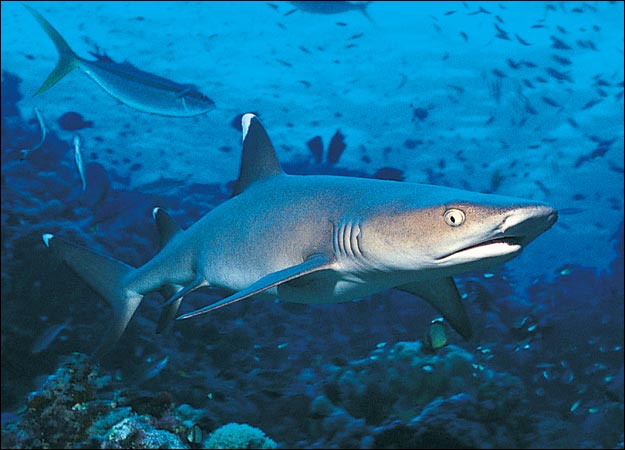 |
Eel Eel Basics: Eels can be found in freshwater as well as salt water. They are snakelike with long bodies. Unlike land snakes, eels are usually scaleless, although a few species can be found with tiny scales along their bodies. Over 100 vertebrae form the eel's spine, which makes the animal very flexible. | 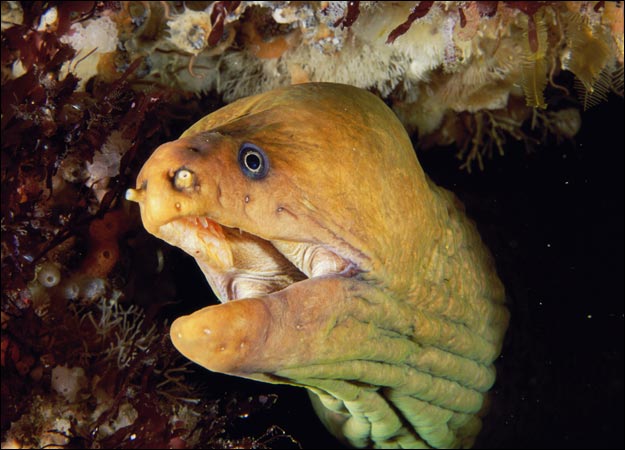 |
Stingray Wings in the Water: Stingrays are usually large and flat, with pectoral fins that look more like wings than fins and are used for propulsion. Rays like to roam along the seabed and sometimes bury themselves in the loose sediment as protection against predators. Organs located behind the eyes, called spiracles, help them to breathe when hidden under the sand. Unlike the bat ray, which forms schools of several hundred individuals, most rays are solitary. Bottom Feeder: Rays are carnivores and feed on bottom-dwelling fish. The mouths of most species are located on their underside and have interlocking teeth perfect for grasping and crushing prey. Other species feed more like the toothless whale by filtering fish and plankton through their sievelike gills. | 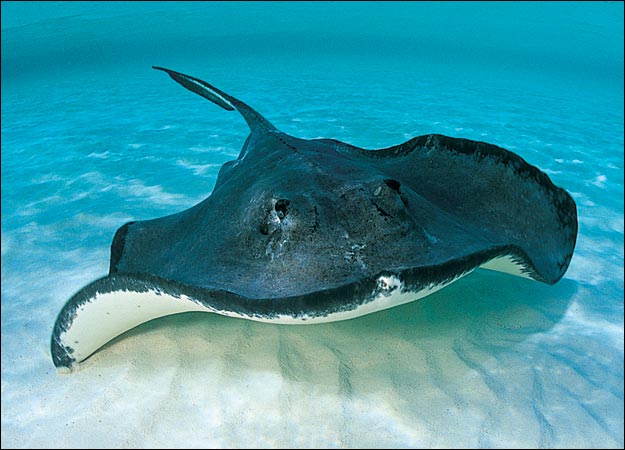 |
Piranha Terrible Teeth: Piranhas are known for their sharp, pointed teeth and sharklike feeding frenzies, but the threat to humans is largely exaggerated. Although the piranha is usually small (the red piranha grows no longer than 13 inches), their teeth are set in powerful jaws, and top and bottom teeth interlock, giving the freshwater fish its ability to tear and rip flesh. Insects to Horses: Victims are usually animals smaller than themselves such as insects, aquatic invertebrates and other fish, although attacks on animals as large as horses have been witnessed. There are no confirmed reports of piranhas killing a human, but these fish do scavenge on human carcasses. | 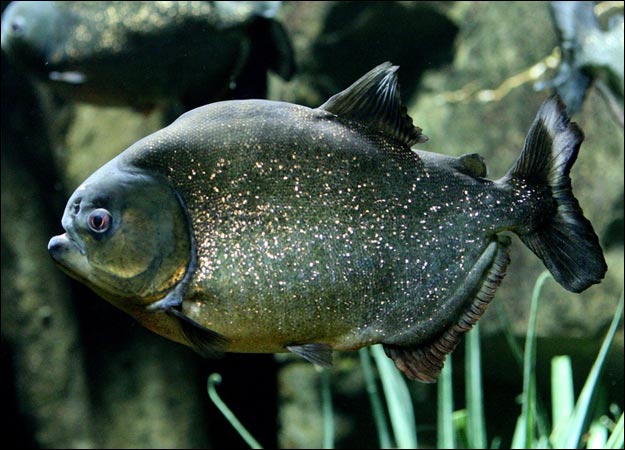 |
Frog Frogs vs. Toads: Frogs and toads are amphibians, meaning they start off as water-breathing juveniles and develop into air-breating adults. No clear distinction exists between frogs and toads, although the skin of a toad tends to be rougher and drier than frogs. Toads also tend to be covered with warts. Deadly Tongue: Both critters are characterized by their short, ridged body and wide head. Large protruding eyes and a noticeable eardrum on each side of the head are always on the alert for the next meal. A large mouth houses a long, sticky tongue that quickly flicks out to capture live prey. Without teeth and unable to chew, a frog's meals are swallowed whole.Vulnerability and Defense: Frogs and toads are very vulnerable as they have no defenses against predators. Their best bet to escape being eaten is their ability to jump quickly or their talent for blending into their surroundings. Some species have evolved glands that secrete a poisonous and distasteful substance on their skin. These animals are usually brightly colored to give warning to a predator ready for a meal that it best look elsewhere. | 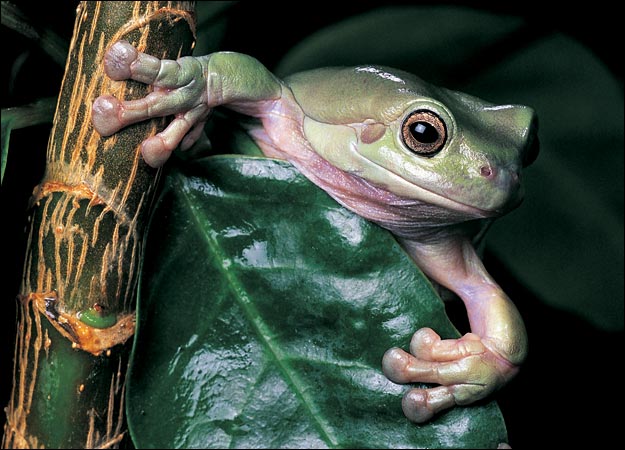 |
Salamander Brightly Colored: : Salamanders come in a variety of colors and patterns, with bright colors usually a warning to predators that this menu item contains a lethal poison. A Disposable Tail: They have slender bodies, usually four legs of similar size, a small head, small eyes and a tail. In some species the tail detaches when attacked. The tail will continue to twitch, distracting the predator as the rest of the salamander makes its escape.Land and Water: Some species of salamander make their home in water, while others are mainly terrestrial. Those that make their home in water take in oxygen through large external gills. | 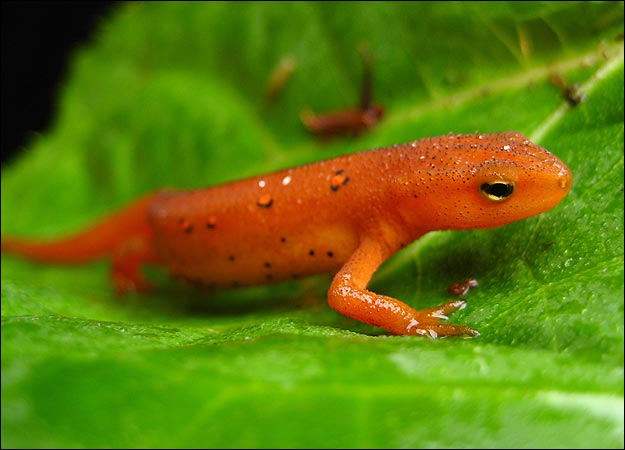 |
Toad No Clear Distinction: Toads and frogs are amphibians, meaning these animals are capable of living on land and in water. No clear distinction exists between toads and frogs, although the skin of a toad tends to be rougher and drier than frogs. Toads also tend to be covered with warts. Protruding Parts: Both critters are characterized by their short, ridged body and wide head. Large protruding eyes and a noticeable eardrum on each side of the head are always on the alert for the next meal. A large mouth houses a long sticky tongue, which quickly flicks out to capture live prey. Without teeth and unable to chew, its meals are swallowed whole.Few Defenses: Toads and frogs are very vulnerable as they have no defenses against predators. Their best bet to escape being eaten is their ability to jump quickly or their talent for blending into their surroundings. Some species have evolved glands that secrete a poisonous and distasteful substance on their skin. These animals are usually brightly colored to give warning to a predator ready for a meal. | 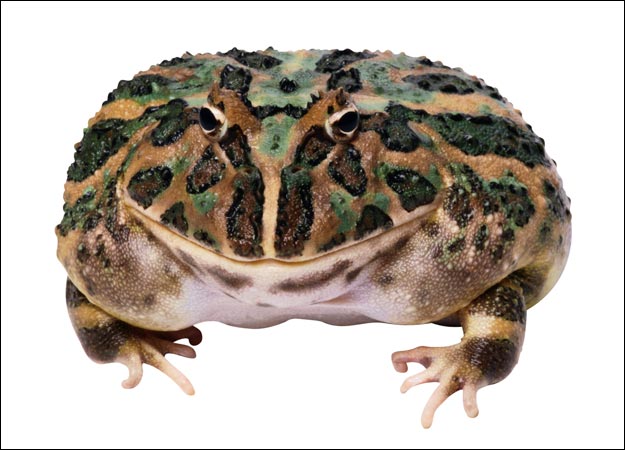 |